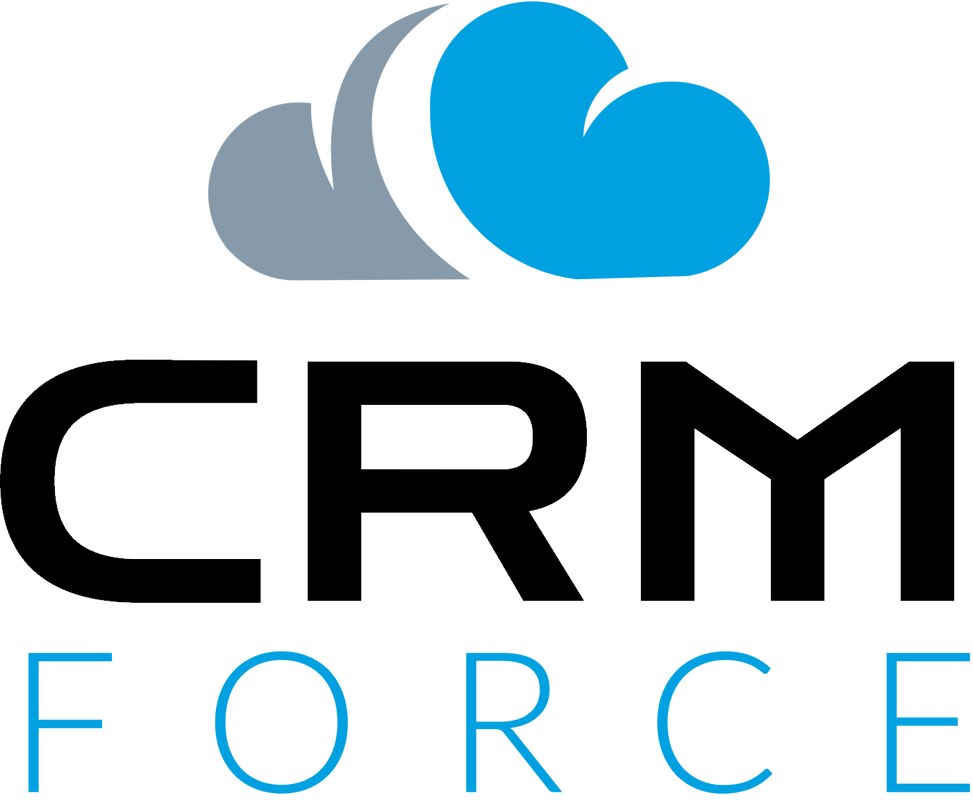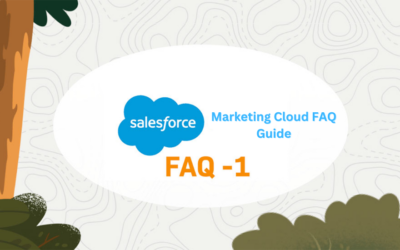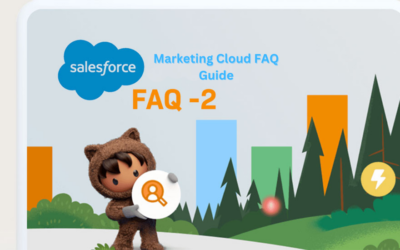In the ever-evolving landscape of business, the cultivation of effective leadership is paramount to an organization’s long-term success. As industries undergo rapid transformations and global markets become increasingly interconnected, the need for visionary leaders who can navigate complexity and drive innovation has never been more critical. This necessitates a strategic focus on developing the next generation of leadership talent, individuals who possess not only the essential skills and competencies required for leadership roles but also the agility to lead in dynamic environments. In this comprehensive exploration, we will delve into proven strategies designed to identify, nurture, and empower emerging leaders. From structured leadership development programs to the critical role of mentorship, rotational assignments, and embracing diversity and inclusion, we will uncover the multifaceted approaches organizations can employ to shape a leadership cadre capable of steering their enterprises into the future.
As organizations grapple with the challenges of a rapidly changing business landscape, the importance of effective leadership development programs comes to the forefront. Beyond conventional training methods, these programs are designed to create a pathway for high-potential individuals to ascend into leadership roles. By providing targeted training, mentorship, and exposure to diverse leadership experiences, organizations can foster a pool of leaders equipped not only with the necessary technical skills but also the strategic vision and adaptability needed for success. Join us on this insightful journey as we explore the intricacies of leadership development, unveiling the significance of mentorship, coaching, diversity promotion, and succession planning in shaping the leaders who will define the future of business. If you need assistance with Salesforce CRM setup and optimization, companies like CRM Force can provide valuable expertise and support.
Leadership Development Programs: A Foundation for Success
In the dynamic and competitive landscape of modern business, leadership development programs stand out as a cornerstone for building a robust pipeline of future leaders. These programs are structured initiatives designed to identify, nurture, and empower high-potential individuals within an organization. By providing targeted training, mentorship, and exposure to diverse leadership experiences, these programs play a pivotal role in shaping the leaders of tomorrow.
1- Identifying High-Potential Talent: The Starting Point
The first step in any successful leadership development program is the identification of high-potential individuals within the organization. This involves a comprehensive assessment of employees based on their performance, skills, and potential for growth. By leveraging performance reviews, feedback from managers, and perhaps even psychometric assessments, organizations can pinpoint individuals who exhibit the qualities and capabilities necessary for leadership roles.
2- Tailored Training: Addressing Specific Leadership Competencies
Once high-potential individuals are identified, the next crucial component of a leadership development program is tailored training. This training should go beyond generic leadership skills and focus on addressing specific competencies essential for success in the organization. Whether it’s strategic thinking, effective communication, or decision-making, the training should be customized to meet the unique challenges and requirements of the business.
3- Mentorship and Coaching: Personalized Guidance for Growth
Incorporating mentorship and coaching into leadership development programs adds a personalized dimension to the growth journey of emerging leaders. Pairing them with seasoned mentors who can provide insights, share experiences, and offer guidance creates a supportive environment for leadership development. Additionally, coaching programs can provide one-on-one sessions to address individual challenges, refine leadership styles, and enhance self-awareness.
4- Experiential Learning: Real-World Challenges for Real Growth
Effective leadership is often learned through experience. Leadership development programs should incorporate experiential learning opportunities, exposing emerging leaders to real-world challenges within the organization. This might involve leading cross-functional teams, spearheading projects, or handling complex situations. These experiences not only enhance leadership skills but also instill the resilience and adaptability required for leadership roles.
5- Leadership Exposure: Broadening Perspectives
To groom future leaders effectively, it’s crucial to expose them to a variety of leadership experiences. This could include opportunities to interact with senior executives, participate in strategic planning sessions, or represent the organization in external forums. Such exposure broadens their perspectives, helping them understand the intricacies of leadership at different levels and in various contexts.
6- Measurement and Evaluation: Ensuring Program Effectiveness
Leadership development programs should not be isolated initiatives; they need to be continuously monitored and evaluated for effectiveness. Establishing key performance indicators (KPIs) and regularly assessing the progress of participants ensures that the program aligns with organizational goals and contributes to the overall development of leadership talent.
7- Inclusivity and Diversity: Fostering a Balanced Leadership Pipeline
An effective leadership development program should prioritize inclusivity and diversity. Ensuring that individuals from diverse backgrounds have equal access to these programs promotes a balanced leadership pipeline. This commitment to diversity not only aligns with ethical considerations but also enhances the overall adaptability and creativity of the leadership team.
8- Continuous Improvement: Adapting to Evolving Needs
The business environment is dynamic, and leadership development programs must evolve to meet changing needs. Regularly reviewing and updating program content, incorporating feedback from participants, and staying abreast of industry trends is essential for ensuring that the program remains relevant and continues to foster the development of leaders equipped to navigate the challenges of the future.
Mentorship and Coaching: Guiding the Path to Leadership Excellence
In the realm of leadership development, mentorship and coaching emerge as powerful catalysts for nurturing the potential of emerging leaders. These two interconnected practices go beyond traditional training methods, providing personalized guidance and support that is essential for the holistic development of leadership skills. Let’s delve into the nuances of mentorship and coaching and understand how they contribute to shaping the path to leadership excellence.
1- Differentiating Mentorship and Coaching: Complementary Approaches
While the terms “mentorship” and “coaching” are often used interchangeably, they represent distinct yet complementary approaches to leadership development. Mentorship typically involves a seasoned professional (the mentor) sharing knowledge, experiences, and insights with a less experienced individual (the mentee). On the other hand, coaching is a more structured process wherein a coach guides an individual to discover solutions, unlock potential, and achieve specific goals.
2- The Role of Mentorship: Wisdom Passed Down
Mentorship is akin to a transfer of wisdom from experienced leaders to those on the ascent. Seasoned mentors serve as confidantes, advisors, and role models, offering a wealth of knowledge gained through their own leadership journeys. This informal relationship fosters a sense of trust and camaraderie, creating a safe space for mentees to seek advice, discuss challenges, and gain insights that extend beyond what formal training programs can provide.
3- The Dynamics of Coaching: Unleashing Individual Potential
Coaching, on the other hand, is a more structured and goal-oriented process. Coaches work with individuals to identify strengths, weaknesses, and areas for improvement. Through a series of targeted conversations and exercises, coaching aims to enhance self-awareness, promote critical thinking, and empower leaders to navigate challenges independently. Unlike mentorship, coaching is not centered solely on the coach’s experiences but rather on unlocking the individual’s potential.
4- Personalization and Relationship Building: The Key to Effectiveness
Both mentorship and coaching thrive on the principles of personalization and relationship building. The success of these relationships hinges on the ability to tailor guidance to the unique needs and aspirations of the individual being mentored or coached. Establishing trust is paramount; a mentee or coachee must feel secure in sharing vulnerabilities, seeking advice, and experimenting with new ideas.
5- Long-Term Career Development: Beyond Immediate Goals
Mentorship often extends beyond the realm of immediate career goals. While coaches may focus on specific skill development or goal achievement, mentors contribute to the long-term development of an individual’s career. Mentors provide insights into navigating organizational politics, offer guidance on strategic career moves, and act as sounding boards for major decisions, thus shaping the trajectory of a leader’s entire professional journey.
6- Building a Culture of Mentorship and Coaching: Organizational Impact
For mentorship and coaching to truly thrive, organizations must actively foster a culture that encourages and supports these practices. This involves identifying potential mentors within the organization, creating mentorship programs, and providing training for both mentors and mentees. Additionally, recognizing and rewarding effective coaching practices helps embed these principles in the organizational DNA.
7- Overcoming Challenges: Addressing Barriers to Effectiveness
While mentorship and coaching can be transformative, they are not without challenges. These may include finding suitable mentors, aligning coaching goals with organizational objectives, and overcoming potential communication barriers. Addressing these challenges requires a proactive approach, including clear communication of expectations, regular check-ins, and a commitment to continuously refining and optimizing the mentorship and coaching processes.
8- Technology as a Facilitator: Virtual Mentorship and Coaching Platforms
In the digital age, technology plays a pivotal role in extending the reach and effectiveness of mentorship and coaching programs. Virtual mentorship platforms and coaching applications enable professionals to connect across geographical boundaries, fostering mentorship relationships that might not have been feasible in a traditional setting. These tools also provide a structured framework for coaching sessions, goal tracking, and progress evaluation.
Promoting Diversity and Inclusion: A Catalyst for Leadership Innovation
In the contemporary landscape of leadership development, promoting diversity and inclusion (D&I) emerges as a powerful catalyst for fostering innovation and ensuring the sustained success of an organization. Beyond being ethical imperatives, diversity and inclusion are strategic drivers that contribute to the creation of dynamic and adaptive leadership teams. Let’s explore in detail how promoting diversity and inclusion influences leadership innovation.
1- Defining Diversity Beyond Demographics: Inclusive Perspectives
Diversity extends far beyond traditional demographic factors such as gender, race, and age. It encompasses a spectrum of experiences, perspectives, and cognitive styles. Organizations committed to diversity recognize the value of assembling teams with varied backgrounds, skills, and viewpoints. Inclusive perspectives challenge conventional thinking, fostering an environment where creativity and innovation can thrive.
2- Fostering a Culture of Inclusion: Beyond Tokenism
Promoting diversity is not merely about ticking boxes or achieving numerical representation. It involves cultivating a culture of inclusion where individuals feel valued, heard, and empowered to contribute authentically. Inclusive leadership practices involve creating an environment that respects and celebrates differences, fostering a sense of belonging among all team members.
3- The Innovation Advantage: Leveraging Diverse Perspectives
Diverse teams inherently bring a variety of perspectives to the table. This diversity of thought is a catalyst for innovation. Leaders who embrace diverse viewpoints and experiences are better equipped to navigate complex challenges, identify unconventional solutions, and capitalize on emerging opportunities. In essence, diversity becomes a strategic asset that fuels the innovation engine within an organization.
4- Breaking the Homogeneity Barrier: Overcoming Groupthink
Homogeneous leadership teams run the risk of succumbing to groupthink, where consensus overrides critical thinking. In contrast, diverse teams bring a range of opinions and ideas, challenging assumptions and fostering a culture of healthy debate. This diversity in thought processes mitigates the risk of tunnel vision, ensuring that leaders consider a broad spectrum of possibilities in decision-making.
5- Attracting and Retaining Top Talent: A Competitive Edge
In a globalized and interconnected world, top talent seeks workplaces that champion diversity and inclusion. Organizations that actively promote these values attract a diverse pool of skilled professionals. Moreover, an inclusive culture is vital for retaining talent, as individuals are more likely to remain in environments where they feel their contributions are acknowledged and their unique perspectives are valued.
6- Addressing Unconscious Bias: A Prerequisite for Inclusion
Unconscious biases can impede the progress of diversity and inclusion initiatives. Leaders committed to fostering an inclusive culture must undergo training to recognize and address these biases. Creating awareness and providing tools to mitigate unconscious biases is fundamental to ensuring that decisions related to talent development, promotions, and project assignments are fair and unbiased.
7- Measuring Diversity and Inclusion: Key Performance Indicators
To gauge the effectiveness of diversity and inclusion initiatives, organizations need to establish key performance indicators (KPIs). These may include metrics related to workforce composition, employee engagement, and the representation of diverse groups in leadership roles. Regularly assessing and reporting on these metrics ensures accountability and facilitates continuous improvement in fostering a diverse and inclusive leadership culture.
8- Diversity in Leadership Representation: Role Modeling for the Future
Leadership teams that reflect diversity send a powerful message to employees at all levels. Seeing individuals from various backgrounds in leadership positions not only serves as a testament to the organization’s commitment to inclusivity but also provides aspirational role models for emerging leaders. This representation in leadership helps break down barriers and encourages diverse talent to pursue leadership roles.
Effective Succession Planning: Charting the Course for Leadership Continuity
Succession planning is a proactive and strategic approach to identifying, developing, and promoting individuals within an organization to ensure a seamless transition of leadership. This process is critical for maintaining organizational stability, fostering leadership continuity, and mitigating the risks associated with unexpected leadership changes. Let’s delve into the key components and benefits of effective succession planning.
1- Identifying Key Leadership Positions: A Strategic Starting Point
Effective succession planning begins with a strategic assessment of the organization’s key leadership positions. These are roles that have a significant impact on the success and continuity of the business. Identifying these positions allows organizations to prioritize succession planning efforts where they are most crucial.
2- Developing a Talent Pipeline: Nurturing Potential Leaders
Once key positions are identified, the next step is to develop a talent pipeline. This involves identifying high-potential individuals within the organization and implementing targeted development programs to groom them for future leadership roles. These programs may include mentorship, training, and exposure to different aspects of the business to ensure a well-rounded skill set.
3- Assessing Leadership Competencies: Beyond Technical Skills
Succession planning goes beyond assessing technical skills. It involves evaluating leadership competencies such as strategic thinking, decision-making, communication, and adaptability. Identifying and developing these competencies in potential leaders ensures they are equipped to handle the complexities of leadership roles.
4- Creating Individual Development Plans: Tailoring Growth Opportunities
Individual development plans are instrumental in guiding the growth of potential leaders. These plans outline specific goals, milestones, and development activities tailored to each individual’s strengths and areas for improvement. This personalized approach ensures that aspiring leaders receive the support and resources needed to reach their full potential.
5- Cross-Training and Skill Development: Versatility in Leadership Roles
Succession planning involves preparing leaders who are versatile and capable of handling a range of responsibilities. Cross-training individuals across different functions and departments ensure they gain a holistic understanding of the organization. This versatility not only prepares them for leadership transitions but also fosters a culture of collaboration and mutual understanding.
6- Transparent Communication: Aligning Expectations
Communication is pivotal in the succession planning process. Leaders should communicate transparently with employees about the organization’s commitment to succession planning and the criteria for advancement. This transparency builds trust and encourages individuals to actively engage in their development, knowing that growth opportunities are merit-based and aligned with organizational goals.
7- Regular Talent Reviews: Monitoring Progress and Adjusting Strategies
Succession planning is an ongoing process that requires regular talent reviews. These reviews assess the progress of potential leaders, identify any emerging gaps in leadership capabilities, and adjust development strategies accordingly. Regular reviews also ensure that the organization remains agile in responding to changing business landscapes and evolving leadership needs.
8- Contingency Planning: Mitigating Risks
Part of effective succession planning involves developing contingency plans for unforeseen events such as sudden leadership departures or retirements. Organizations should have a pool of individuals who can step into critical roles on short notice. This proactive approach mitigates the risks associated with sudden leadership vacuums and ensures that business operations continue seamlessly.
9- External Talent Considerations: Balancing Internal and External Hires
While internal talent development is a core aspect of succession planning, organizations should also consider external talent when needed. Striking the right balance between internal promotions and external hires brings fresh perspectives and experiences into the organization while maintaining a sense of continuity and loyalty among existing employees.
10- Technology and Analytics: Enhancing Succession Planning
Modern technologies and analytics play a crucial role in enhancing succession planning. Advanced analytics can help identify potential leaders based on performance data, skill assessments, and other relevant metrics. Technology also facilitates the management of individual development plans, ensuring that progress is tracked, and adjustments are made in real time.
Conclusion
In conclusion, the exploration of strategies for developing the next generation of leadership talent underscores the pivotal role leadership plays in the success of organizations navigating the complexities of the contemporary business landscape. From the initiation of structured leadership programs to the fostering of diversity and inclusion, each strategy contributes uniquely to the cultivation of a leadership cadre capable of steering businesses toward innovation and resilience. By recognizing the importance of mentorship, coaching, and effective succession planning, organizations can ensure a seamless transition of leadership, sustaining continuity and adaptability. As the business world continues to evolve, the commitment to investing in leadership talent is not merely a strategic choice but an essential ingredient for organizational longevity and growth.
In the dynamic interplay of talent development and strategic planning, the realization emerges that leadership talent is not a static concept but a dynamic force that evolves with the needs of the organization and the challenges of the market. The commitment to continuous learning, adaptability, and a culture of innovation becomes the bedrock upon which leadership talent flourishes. Organizations that recognize the significance of this dynamic process are poised not just to weather the storms of change but to harness them for growth and sustained success. As we conclude this exploration, the imperative remains clear: the strategic development of leadership talent is not just an investment in the future; it is the cornerstone of a resilient, forward-looking organizational ethos. To learn more about how CRM Force can assist you in recruiting top CRM talent and optimizing your CRM strategies for successful drip campaigns, contact us today. Together, let’s maximize your customer engagement Contact Us today.





